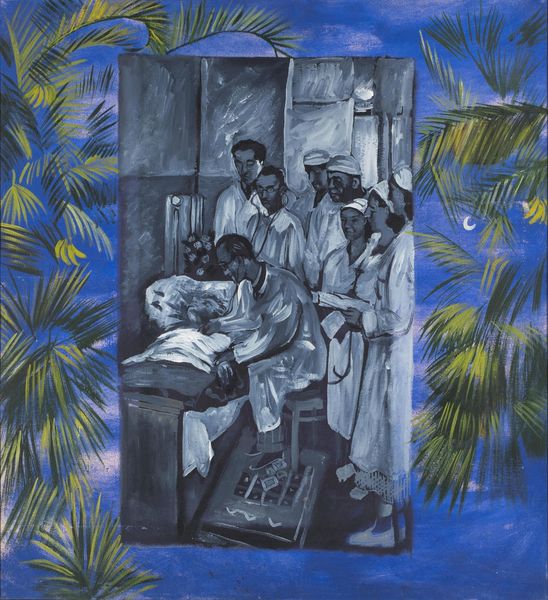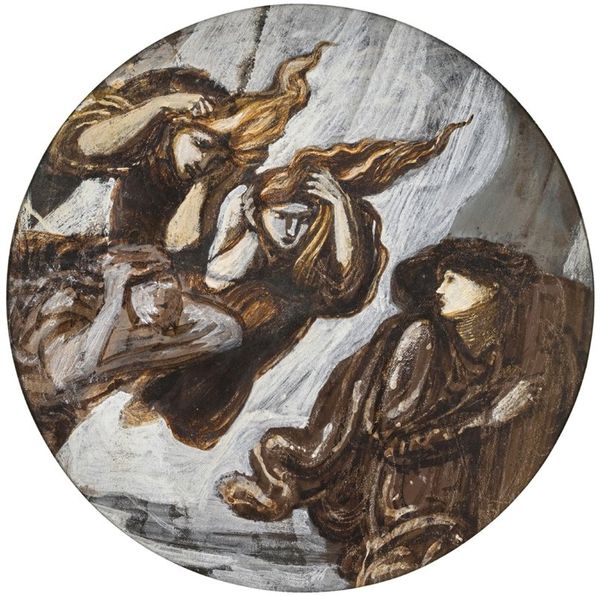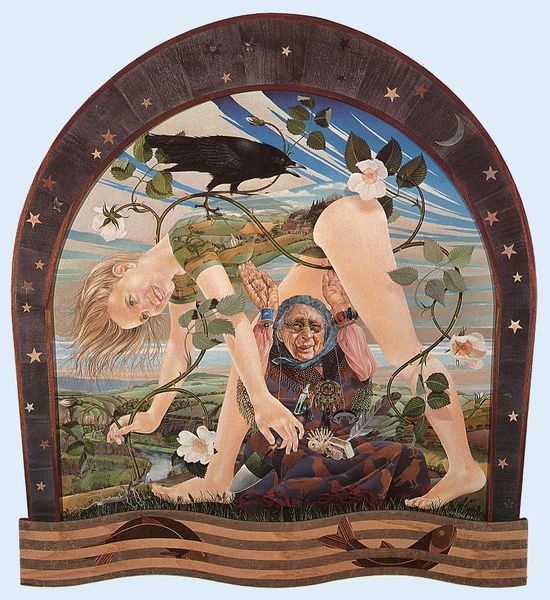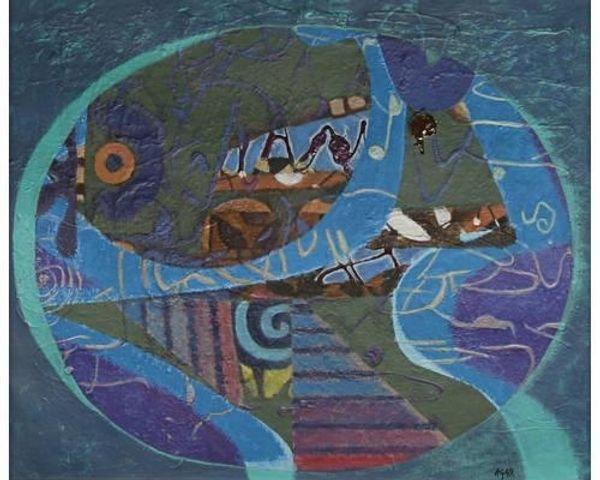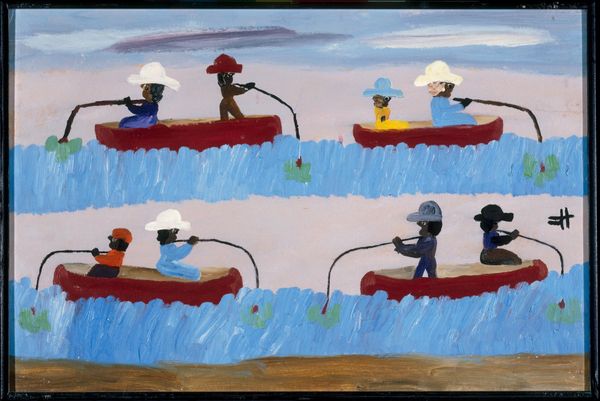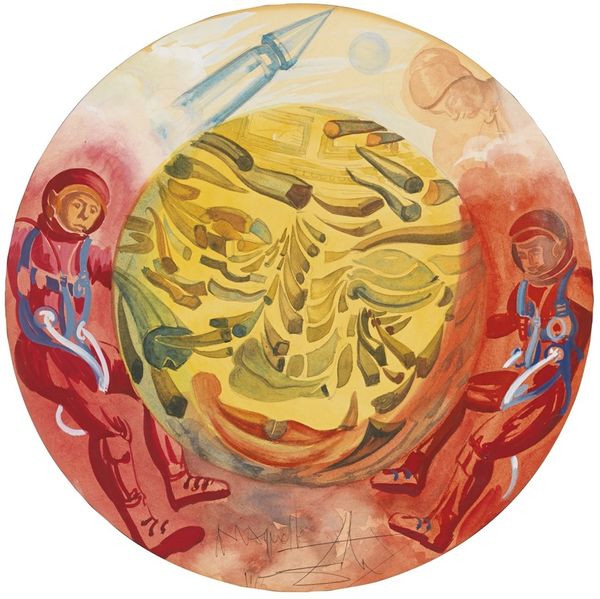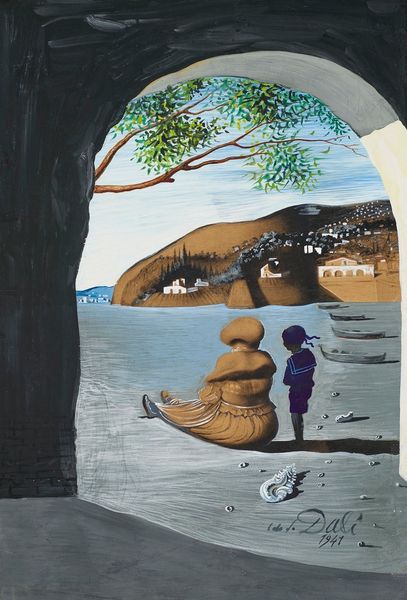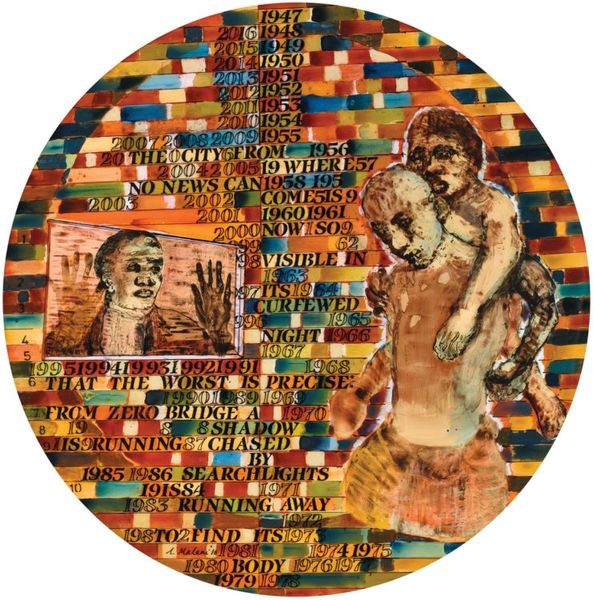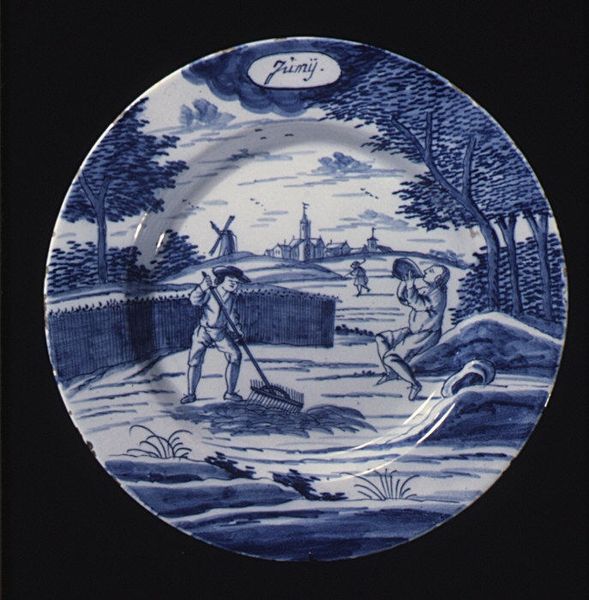
painting
#
painting
Copyright: Candido Portinari,Fair Use
Curator: Portinari's painting "Discovery of Gold," dated 1941, is a powerful piece, full of raw emotion. Editor: My first thought is the stark, almost frenetic energy. The faces are so expressive. What symbolic narratives are unfolding here? Curator: I see the figures in a very crowded boat, seemingly in the middle of a body of water. Look at the different tasks—someone holds a massive stone, another is digging. Portinari used an interesting checkerboard pattern on their clothes. Considering the period, could this be a study on labor exploitation within gold extraction? Editor: That is astute, as each figure contributes to the collective labor with varied tools: ropes, paddles, and their own hands. The man hoisting the stone seems a reference to Atlas, burdened by a precious world above him, while the checkerboard could denote some organized but perhaps unjust, system? Curator: Precisely. The contrast between the cool blue of the surrounding water and the intense physical activity on the boat makes it all the more poignant. There is tension between natural resource and backbreaking labor. What do you make of the central figure with his hands thrown up? Is this ecstasy, or desperation? Editor: It’s an ambiguous pose. Exaltation, maybe a hint of mania? Notice also how he mirrors a primal response to newfound treasure, while he looms over a boy tethered to the boat with rope, a symbolic linking between generations and cycles of ambition. I sense a commentary on perpetual return of exploitation. Curator: I’m especially interested in understanding where he procured the materials and what influenced him at this time in Brazilian history. How would it been received? Did it push the envelope? I wish we knew. Editor: Definitely lots of complexity, then, about what constitutes discovery and progress! This one resonates well.
Comments
No comments
Be the first to comment and join the conversation on the ultimate creative platform.


